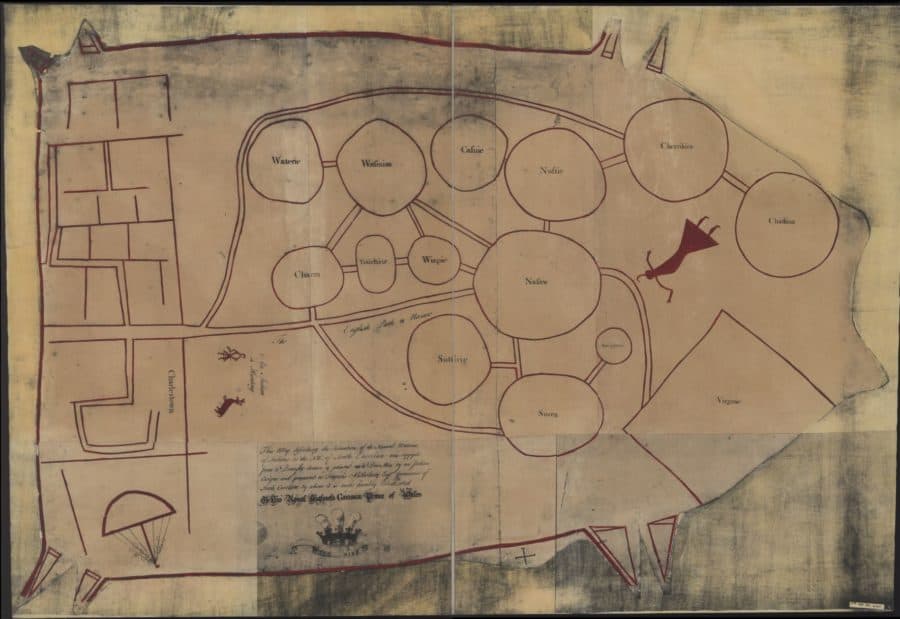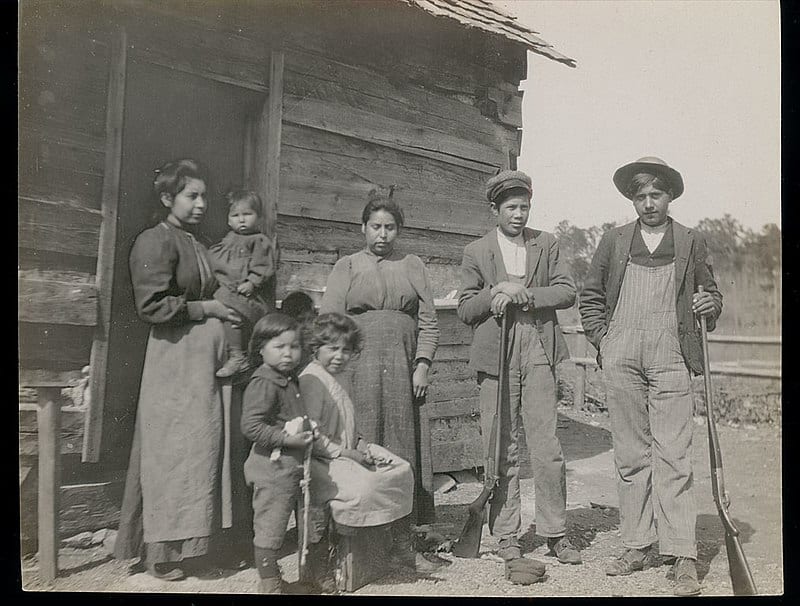Remembering the Saxapahaw people of Alamance County

Pictured above: A c. 1724 English copy of a deerskin Catawba map of the tribes between Charleston (left) and Virginia (right) following the displacements of a century of disease and enslavement and the 1715–7 Yamasee War. The Sissipahaw are labeled as “Saxippaha”.
Before the arrival of Europeans, the Americas were far from “empty” continents. Today, the names of some of the major groups are well known— the Cherokee, Chippewa, Iroquois, Sioux, Lakota, Apache, Navajo, among so many others— but before European germs, guns and steel decimated the native populations, this continent was absolutely thriving from one coast to the other. Here on the modern-day site of the village of Saxapahaw lived the indigenous Americans called the Saxapahaw, the Sissipahaw or the Sauxpa, and what we know about them is sparse, but it is still essential that we not forget who they were from what little information we have available.
The Sissipahaw/Saxapahaw are often thought to be one in the same as the nearby Shakori, who lived further south in present-day Chatham County, or at least a subgroup of the Shakori people. The Saxapahaw language was most likely Siouan, and a sub-dialect of Shakori, and the only words in Saxapahaw that have survived have been numbers: unche for “one”, necte for “two”, wartsan by “ten” and unche schanwan “eleven”.
In the 16th century, the Saxapahaw made first contact with Europeans, as noted by the Spanish explorer named Vendera, who called these people the Sauxpa.
In 1701, Englishman John Lawson visited the Sissipahaw town on the Haw River in the spot where the current village of Saxapahaw stands.
Modern residents and visitors to the village of Saxapahaw know that it’s a place of peace, tranquility, and harmony with the natural world. During the Civil War, Quakers in southern Alamance County refused to fight for either side and helped to ferry slaves towards freedom in the North or into hiding in the eastern part of the state. Even earlier than that, the Saxapahaw/Sissipahaw people tried to keep the peace among indigenous tribes and white settlers along the Haw when possible.
In 1711, the Saxapahaw refused to join Tuscarora Chief Hancock’s plans to make war on white Carolina settlements, and in turn, a Tuscarora party attacked them, destroying their town and scattering the people. Some Saxapahaw warriors later joined the invading South Carolina army of Col. John Barnwell to fight the Tuscarora, while others may have fled to the Waccamaw. After the Tuscarora War ended in 1715, the Saxapahaw joined with other indigenous groups in the Yamassee War. The survivors of these enormous conflicts, the two bloodiest colonial wars fought in the Carolinas, probably then joined the diverse and powerful Catawba Nation along the waterways of southern North Carolina and into South Carolina.

Unfortunately, little is known about the Saxapahaw, and after the Yamassee War, they were destroyed and scattered. Like the Shakori, we know they lived in wigwam-like structures, farmed corn and beans, and hunted the nearby woods for turkey, venison, and bear. They used the bear as a symbol of their tribe. Both boys and girls underwent a puberty ritual called husquenawing before entering adulthood where they were given toxic herbs and little food.
Today, all that seems to remain of the Saxapahaw is the name itself, given to a unique little village on the Haw River. And there’s only one Saxapahaw, and we in this village do what we can to protect this land, its history, and its inherent value. After decades of industrial pollution into the river, the area where the Saxapahaw people once lived is now a beautiful hamlet full of life, culture, creativity, and possibility. We can’t undo the dispersal of the Saxapahaw/Sissipahaw, but we can always remember them, and honor them as the original inhabitants and stewards of this land we call home.
If you would like to learn more, there is an Indigenous Peoples Day celebration today (October 14) at the Haw River Ballroom in Saxapahaw starting at 6 pm. This is a celebration of the past, present and future indigenous peoples of Alamance County. Read more here
